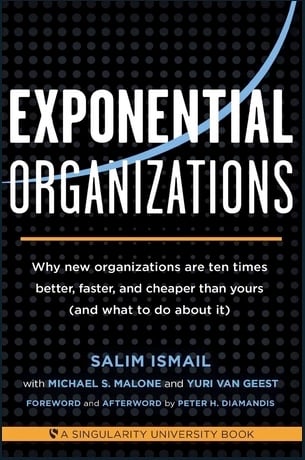Many nonprofits today run their organisations just like any other business. Although many may not be in it for the money but solely to advance their humanitarian goal and mission, there are essential points they need to keep in mind to acquire confidence and gain trust among donors and investors, respect in the market, and support from the public.
Insight: Not-for-profits that have a purpose-led strategy perform better than those who don’t.
Data: In a five-year study, meaningful brands with a purpose and those that connected to human wellbeing outperformed the stock market by 120%. Purpose-driven companies also outperformed the S&P 500 by 10 times between 1996 and 2011.
Key Action Point: Be driven by purpose, narrow your focus and find partners, control your revenue, and know who’s with you.
The Australian Bureau of Statistics reports that as of October 2016, there are approximately 54,000 registered charities in Australia.
Like any organisation, nonprofits need a strategy not only to help them stick to their guns and stay real about who they are but also to help them fulfil their purpose and mission.
In a time where industries are ever-evolving, the right strategy helps nonprofit institutions identify and commit to specific and measurable goals, prioritise initiatives that need to be implemented, and come up with a plan that allows them to sail through even in the face of change.
In this post, I’ll highlight key points we’ve learned over the years in developing a strategy for not-for-profit organisations.
From Not-for-Profit to Purpose-Led
Purpose drives your strategy and is the single defining point that steers your organisation’s goals.
Purpose-led organisations are more inspired, more energised, and more focused — essential states of mind that empower you and your team to commit and exceed goals.
More than sticking by the need to be a not-for-profit organisation, shifting the focus to becoming a more purpose-led organisation clarifies your goal and emphasises your mission, which encourages trust in investors.
The best nonprofits we know are steered by a higher purpose and mission, one that you can see through a powerful value statement or a clear goal that is consistent throughout every touch point in the organisation.
As an example, we’ve worked with Northcott, a not-for-profit disability service provider that works with customers to realise their potential. They highlighted their purpose distinctly on their website which is “To build an inclusive society where people can live the life they choose.”
Your purpose, therefore, must fuel your strategy. With a defined purpose to guide you, developing strategies to get you closer to where you need to be and driving business results are easy.
Narrow the Focus and Find Partners
A nonprofit organisation with a clear goal and mission in mind spells credibility and attracts investor confidence.
Less is more in business, and just as businesses that offer niche products attract more customers, a nonprofit that is clear about what it wants and goes out to get it is bound to get the support it needs.
Narrowing your focus on specific targets improves efficiency and helps you save on resources.
With a clear focus to guide your organisation, you can focus on what matters and have a better chance of attracting partners that are driven by the same ideas.
Cross-sector partnerships between nonprofits and for-profit businesses or educational and government sectors offer greater economic and social benefit to stakeholders.
Nonprofits can leverage these partnerships not only for funding to promote their mission but in ensuring long-term sustainability and support for more new projects in the future.
To do this, you need to present a strategic value proposition that meets the objectives of the partner, has a clear impact and focus that drives the success of the partnership, and ascertains a good brand fit between the two stakeholders in terms of values, ideals, and business goals.
Bedford, another nonprofit that we’ve worked with over the years, is focused on changing the lives of people with disabilities. They have been known for diverse ambassadors and partners ranging from fundraisers to football players. They are also proudly supported by the government of South Australia through community benefit SA.
Control Your Revenue to Control Your Future
Reputation is absolutely critical to nonprofit organisations. It makes or breaks how much support you get in advancing your organisation’s mission.
Having the right financial control in place within your organisation sets the pace for how your donors, future investors, and the general public see how much you stay true to your goals and what you promise to deliver.
Having proper internal controls in place ensures financial integrity and helps protect nonprofits from fraud and inaccurate financial reporting. No matter how big or small a nonprofit is, taking the time to put in basic financial controls in place should be a priority.
ACNC reports that around 63% of charities in Australia are classified as fairly small with an annual revenue of $250,000 or less. About 17% have an annual revenue of $250,000 to $1,000,000, and only 19% have an annual revenue of more than $1,000,000.
Ultimately, nonprofits have to consider that although they may not be in it solely for the money, a good grip on finances is essential to keeping daily operations and critical projects running.
In the long haul, financial integrity safeguards your organisational reputation and ultimately helps you control your future too.
Know Who’s with You and Against You
As with any business, nonprofit organisations need to consider that not everyone will be out there to support your initiative — no matter how socially impacting it may be.
You’ll most likely find more ruthless competition in nonprofit funding than anywhere else when the stakes are really high in causes that you support.
In fact, many will wish you to fail. Knowing who is onboard with you and who isn't at the onset is crucial in driving success, and guiding you to make the right decisions in business or otherwise.
Conclusion
Having worked with dozens of not-for-profits over the course of a decade, we’ve seen many inside and outside organisations that make the difference on whether the organisation is effective in making a step change.
A strategy can be complex, but a great strategy is simple — just not easy. To sum up what not-for-profits need to start getting right:
- Stop defining and acting like a not-for-profit, and start being a powerful ‘for purpose’ organisation.
- Control your revenue streams. (Aim to) become independent of handouts and start controlling your destiny.
- Niche, partner, merge, collaborate — whatever you need to do to stop the confusion and overlap that’s so prevalent. Get very clear about the game you’re playing and who can help you.
- Know who’s willing to support your cause.
- Bonus: Get clear. Working on the inception of RUOK? Day, the magic of the movement was owning a single trigger point with a single action. That’s powerful. It’s not easy though, but that’s strategy.
















